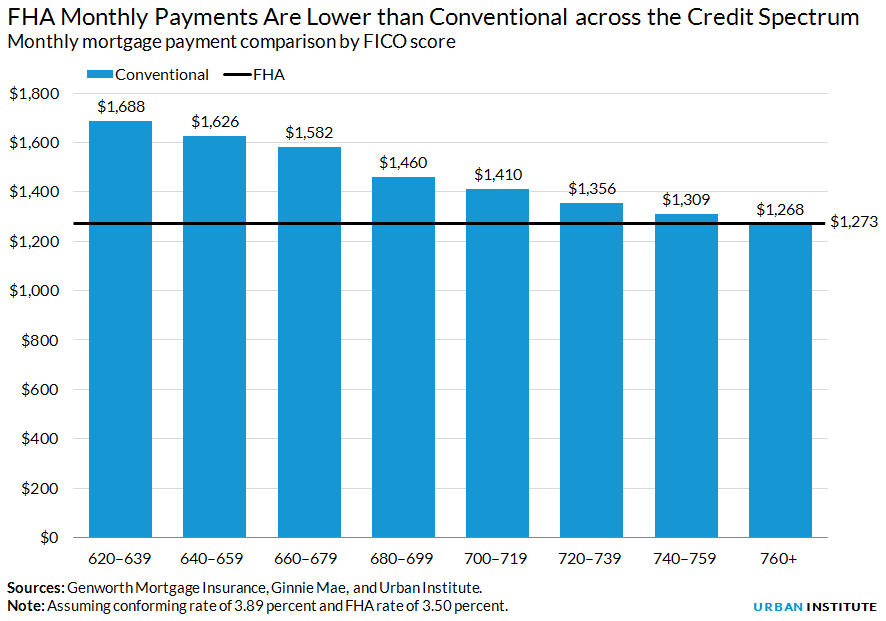
<p>Photo via Shutterstock</p>
The announcement of non–Federal Housing Administration (FHA) low–down payment programs from four of the nation’s top home lenders—Bank of America, Wells Fargo, JPMorgan Chase, and Quicken Loans—has generated a lot of headlines recently. But what are these programs about? And do they signal a turning point for credit availability?
Bank of America’s Affordable Loan Solution (ALS), Wells Fargo’s yourFirstMortgage, JPMorgan Chase’s Standard Agency 97%, and Quicken’s 1 percent down payment programs target first-time homebuyers and low- and moderate- income (LMI) borrowers who may lack down payment funds or have lower credit scores. Accordingly, all four programs have lower minimum credit score requirements—620 (Wells Fargo), 660 (Bank of America), 680 (Chase and Quicken).
Borrower-friendly features
These programs have several borrower-friendly features, such as the ability to combine down payments with gifts and grants, homebuyer counseling, consideration of nontraditional forms of credit, and no private mortgage insurance (PMI) under Bank of America’s ALS. Wells Fargo’s yourFirstMortgage offers loan options that can work with or without PMI. Wells Fargo and Bank of America intend to sell their loans to Fannie Mae and Freddie Mac, respectively. And Self-Help Ventures (a nonprofit fund and affiliate of Self-Help Credit Union) provides first-loss risk coverage in lieu of PMI, saving borrowers money. Quicken offers borrowers a 2 percent grant and sells the loan to Freddie Mac under its Home Possible advantage program, which requires PMI. While Chase’s Standard Agency 97% loans will be sold to Fannie Mae, it is not known publicly whether PMI alternatives are available.
Similar, but not identical
The two programs we know the most about—ALS and yourFirstMortgage—have many structural similarities, including first-loss risk sharing and availabile PMI alternatives. Still, there are important differences.
Wells Fargo’s yourFirstMortgage consolidates various low–down payment programs into a single product that reduces complexity and allows borrowers to easily compare conventional and FHA options and pricing. Not having to wade through a thicket of loan options could appeal to many borrowers. Once borrower eligibility is confirmed, Wells Fargo would determine the best back-end program to sell the loan into the secondary market via programs offered by Fannie Mae or Freddie Mac (the government-sponsored enterprises), either with PMI or Self-Help’s first-loss coverage.
Bank of America’s ALS is a narrower affordable loan program that works only with Self-Help’s coverage. But ALS lending volumes will likely be smaller because of scarce nonprofit capital. There are two more important differences between ALS and yourFirstMortgage: Bank of America intends to sell servicing of all ALS loans to a specialty servicer, retaining neither interest nor risk in the loan post origination. Wells Fargo, on the other hand, intends to retain servicing in house, suggesting a vested financial interest in the long-term success of yourFirstMortgage. Wells Fargo also offers borrowers a 1/8 percent rate reduction for completing homebuyer education. Bank of America, Chase, and Quicken also offer counseling.
Will these programs improve credit availability?
Today, LMI borrowers and first-time homebuyers are heavily reliant on FHA for their mortgage needs. But many lenders have recently pulled back from FHA lending, presumably because of heightened risk of enforcement. These new programs that don’t rely on FHA are creative attempts to increase lending to LMI borrowers.
But these programs are unlikely to become meaningful substitutes for FHA lending for two reasons. The first is an acute shortage of nonprofit capital to support lending volumes nationally, as I have discussed previously. The second is FHA’s huge price advantage over conventional lending across the credit spectrum. Figure 1 compares the monthly payment on a $250,000 house with a loan-to-value ratio of 96.5 percent, between FHA and conventional channels. Based on this analysis, the monthly payment for FHA mortgages is lower than for conventional mortgages for nearly all FICO buckets. Even more important, FHA’s price advantage only grows as one goes down the credit spectrum. In other words, the harder lenders try to lend to more LMI borrowers, the more expensive it will get. And to make borrower economics work, lenders will have to offer increasingly greater savings.

None of this is to suggest that these programs won’t be helpful. Many borrowers, especially near the FHA-conventional break-even line, could benefit from these programs, more so because of the recent cut in PMI premiums, although higher creditworthy borrowers are most likely to benefit from it. Loans covered by Self-Help that don’t require PMI will also reduce monthly payments. Additionally, Fannie and Freddie offer affordable programs with reduced PMI requirements, helping cut payments. Likewise, yourFirstMortgage’s 1/8 percent rate incentive, while small, still helps. Lastly, we are still in the early stages of making low–down payment lending outside the FHA a reality—enhancements may be made as we go along. FHA’s current price advantage is simply a reminder that such improvements will be needed if we are to lend tight credit a sustained meaningful blow.
The views expressed in this blog post are those of the author and should not be attributed to the Urban Institute, its trustees, or its funders. Bank of America, JPMorgan Chase, Quicken Loans, and Wells Fargo are members of the Urban Institute’s National Council, a network of high-level community, policy, and business leaders whose flexible financial support allows Urban to anticipate and respond to emerging policy issues with timely analysis and relevant insights. As stated in our funding principles, no funder determines research findings or the insights and recommendations of our experts. Accordingly, these funders had no knowledge of or involvement in writing this blog post and have not been given any opportunity to comment on it.
Let’s build a future where everyone, everywhere has the opportunity and power to thrive
Urban is more determined than ever to partner with changemakers to unlock opportunities that give people across the country a fair shot at reaching their fullest potential. Invest in Urban to power this type of work.